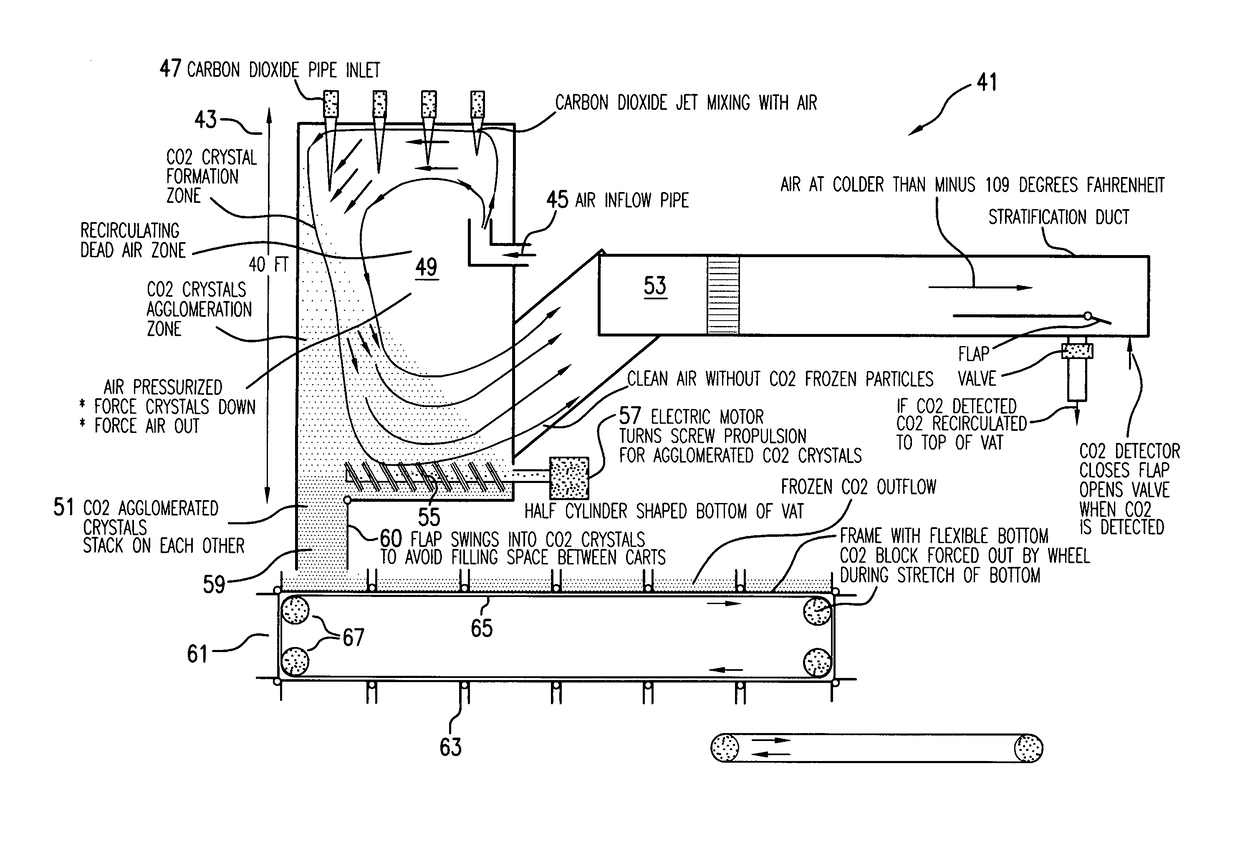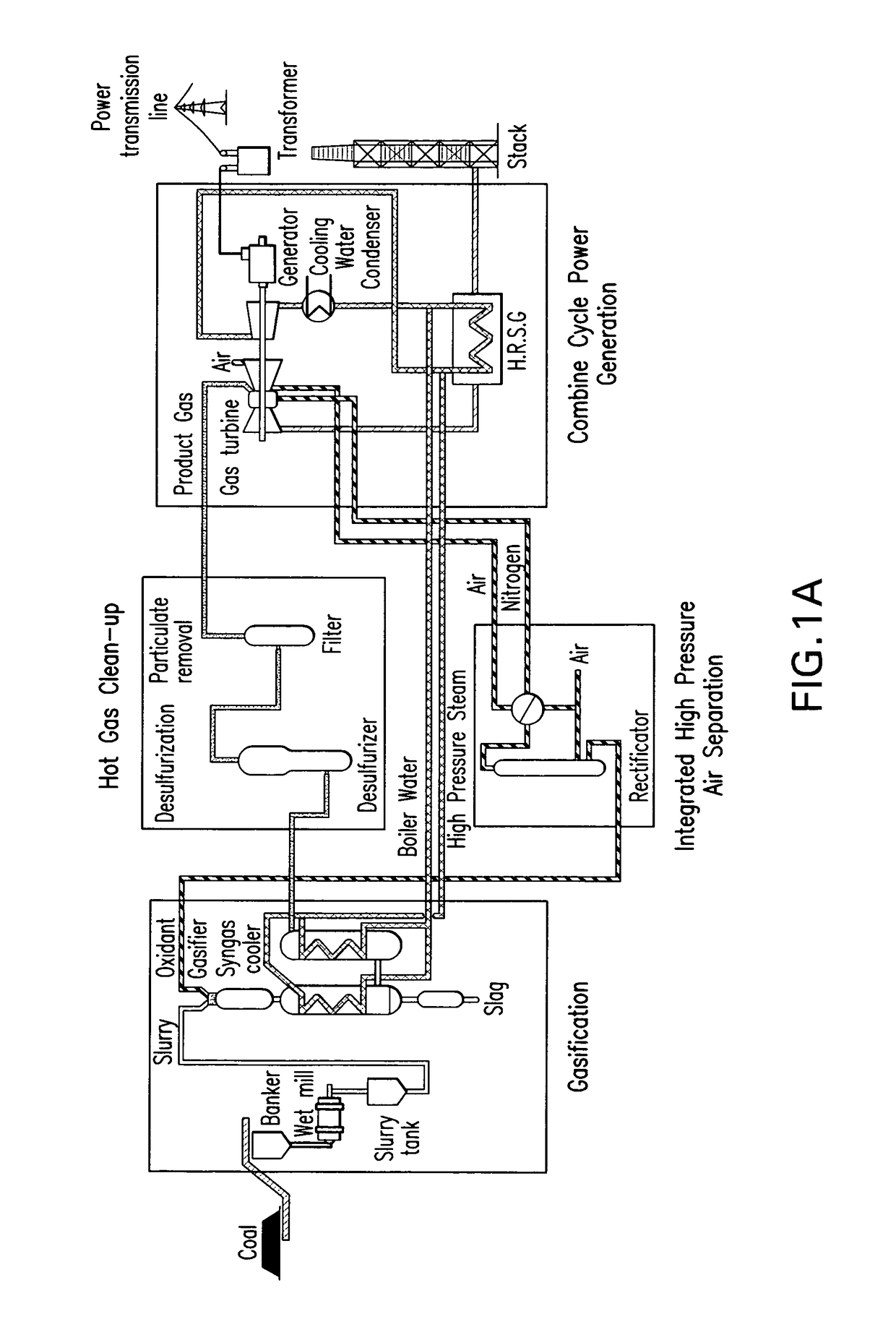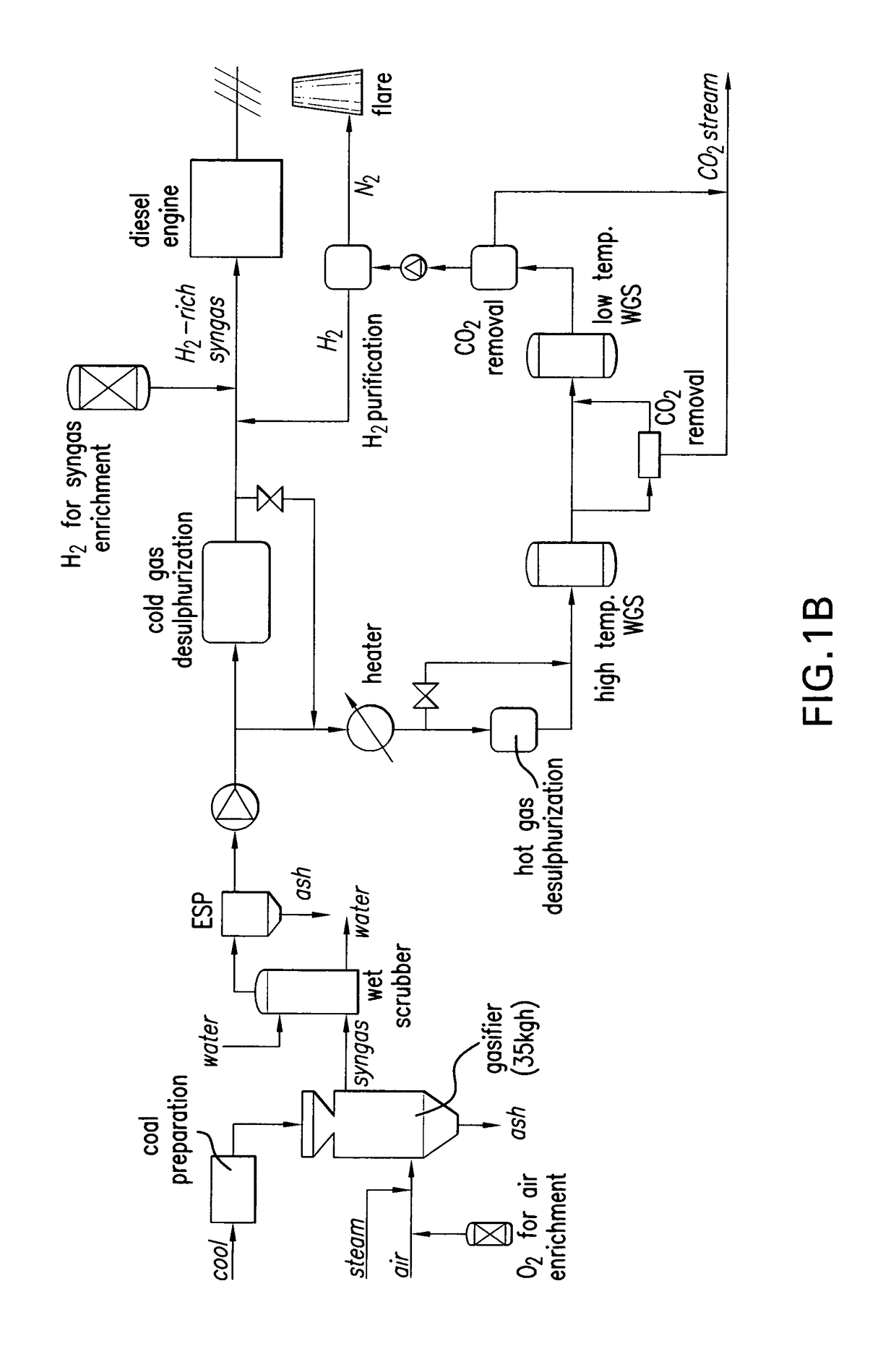Method and apparatus for removing carbon dioxide gas from coal combustion power plants
a technology of carbon dioxide gas and coal combustion power plant, which is applied in the direction of lighting and heating apparatus, sublimation, separation processes, etc., can solve the problems of inability to determine the exact percentage of the greenhouse, unfavorable environmental protection, and serious environmental hazards, so as to increase the efficiency of the fuel driven turbine generator, reduce the effect of energy consumption and greater mass flow
- Summary
- Abstract
- Description
- Claims
- Application Information
AI Technical Summary
Benefits of technology
Problems solved by technology
Method used
Image
Examples
example one
[0142]In a simple version of the proposed solution, the CTT device can be located in close proximity to the coal-combustion plant and use a minimal amount of power from the coal-combustion power plant to drive the CTT compressor. In this respect, FIG. 9 shows the compressor, turbo compressor and turbo expander CTT device with their associated heat exchangers, wherein the chart shows the thermodynamic state for each step in the CTT process.
[0143]It is an objective of this device to use two commercially available devices: (1) A gas compressor, and (2) A coupled turbo compressor and turbo expander set as a single CTT device to freeze the carbon dioxide derived from the IGCC. FIG. 9 shows how the power available from the turbo expander (28,772 kW) is appropriately matched to the power required by the turbo compressor (minus 27,859 kW). The chart at the top shows the compressor rating at 27,444 kW. However, there is recoverable waste heat of minus 4,115 kW from the compressor and minus 2...
example two
[0151]This example considers the limitations imposed by the compression available across each turbo compressor impeller disc and imposed by the expansion available across each turbo expander impeller disc. In particular, the boundary layer attached to each wall of the fluted vane is limited in terms of pressure ratio before it detaches from the wall. Furthermore, since there is power transfer from the turbo expander to the turbo compressor during its steady state “free spooling” mode, it is necessary to match two sets of turbo expander and turbo compressor combinations, wherein each combination has a separate power rating.
[0152]FIG. 13 shows the compressor intake of 14.696 psia and 70 degrees F. ambient air (Point A) to 50 psia and 247 degrees F. compressed air (Point C). The isentropic compression process would have resulted in a higher temperature of 291 degrees F. However, there were temperature drops related to the imperfect compression process and heat transfer to the body of t...
PUM
| Property | Measurement | Unit |
|---|---|---|
| power | aaaaa | aaaaa |
| power | aaaaa | aaaaa |
| diameter | aaaaa | aaaaa |
Abstract
Description
Claims
Application Information
 Login to View More
Login to View More - R&D
- Intellectual Property
- Life Sciences
- Materials
- Tech Scout
- Unparalleled Data Quality
- Higher Quality Content
- 60% Fewer Hallucinations
Browse by: Latest US Patents, China's latest patents, Technical Efficacy Thesaurus, Application Domain, Technology Topic, Popular Technical Reports.
© 2025 PatSnap. All rights reserved.Legal|Privacy policy|Modern Slavery Act Transparency Statement|Sitemap|About US| Contact US: help@patsnap.com



